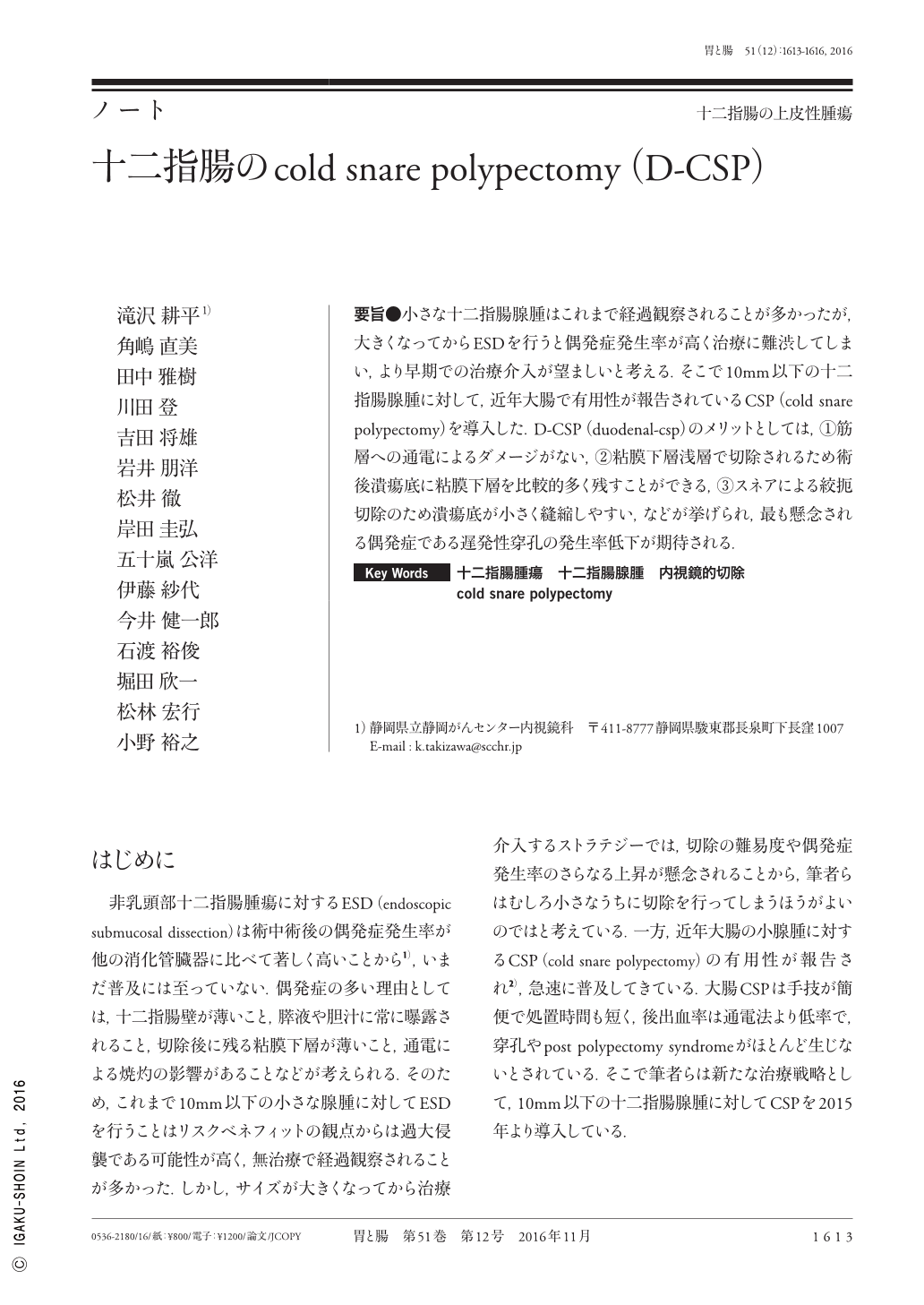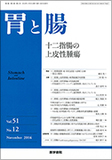Japanese
English
- 有料閲覧
- Abstract 文献概要
- 1ページ目 Look Inside
- 参考文献 Reference
- サイト内被引用 Cited by
要旨●小さな十二指腸腺腫はこれまで経過観察されることが多かったが,大きくなってからESDを行うと偶発症発生率が高く治療に難渋してしまい,より早期での治療介入が望ましいと考える.そこで10mm以下の十二指腸腺腫に対して,近年大腸で有用性が報告されているCSP(cold snare polypectomy)を導入した.D-CSP(duodenal-csp)のメリットとしては,①筋層への通電によるダメージがない,②粘膜下層浅層で切除されるため術後潰瘍底に粘膜下層を比較的多く残すことができる,③スネアによる絞扼切除のため潰瘍底が小さく縫縮しやすい,などが挙げられ,最も懸念される偶発症である遅発性穿孔の発生率低下が期待される.
CSP(cold snare polypectomy)has been reported to minimize the risk of complications, and it has become a standard treatment for small colorectal polyps. We considered that CSP might also be suitable for small duodenal polyps.
CSP was performed using an electrosurgical snare without electrocautery. The polyp, including the normal surrounding mucosa, was snared to maintain a non-neoplastic mucosal margin around the lesion. Blood was oozing immediately after CSP but stopped soon without requiring any endoscopic hemostasis.
This technique appeared to be safe, with the following three advantages:①It did not require electrocautery ; therefore, there was no possibility of delayed perforation due to the thermal burn effect. ②The depth of the layer cut by CSP was shallower than that cut by ESD. ③The mucosal defect following CSP was smaller than that following ESD, making its closure easy using standard endoclips.

Copyright © 2016, Igaku-Shoin Ltd. All rights reserved.


